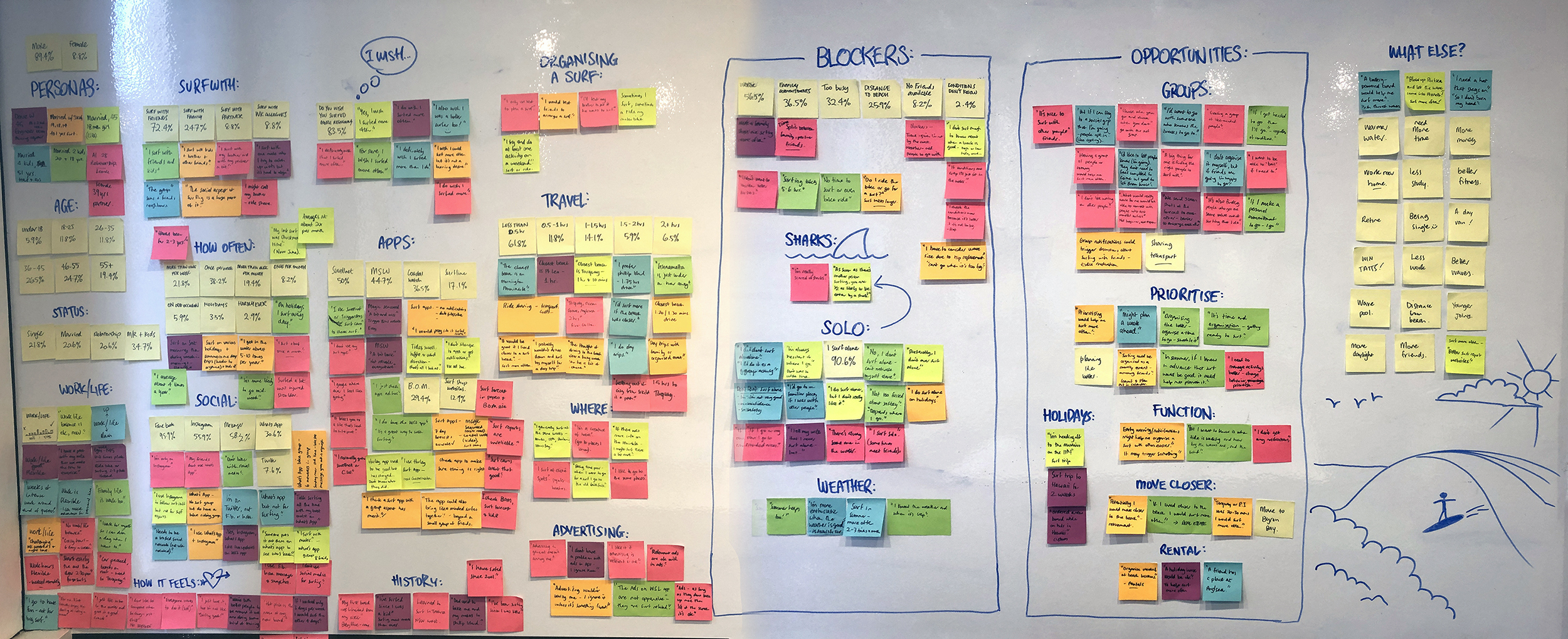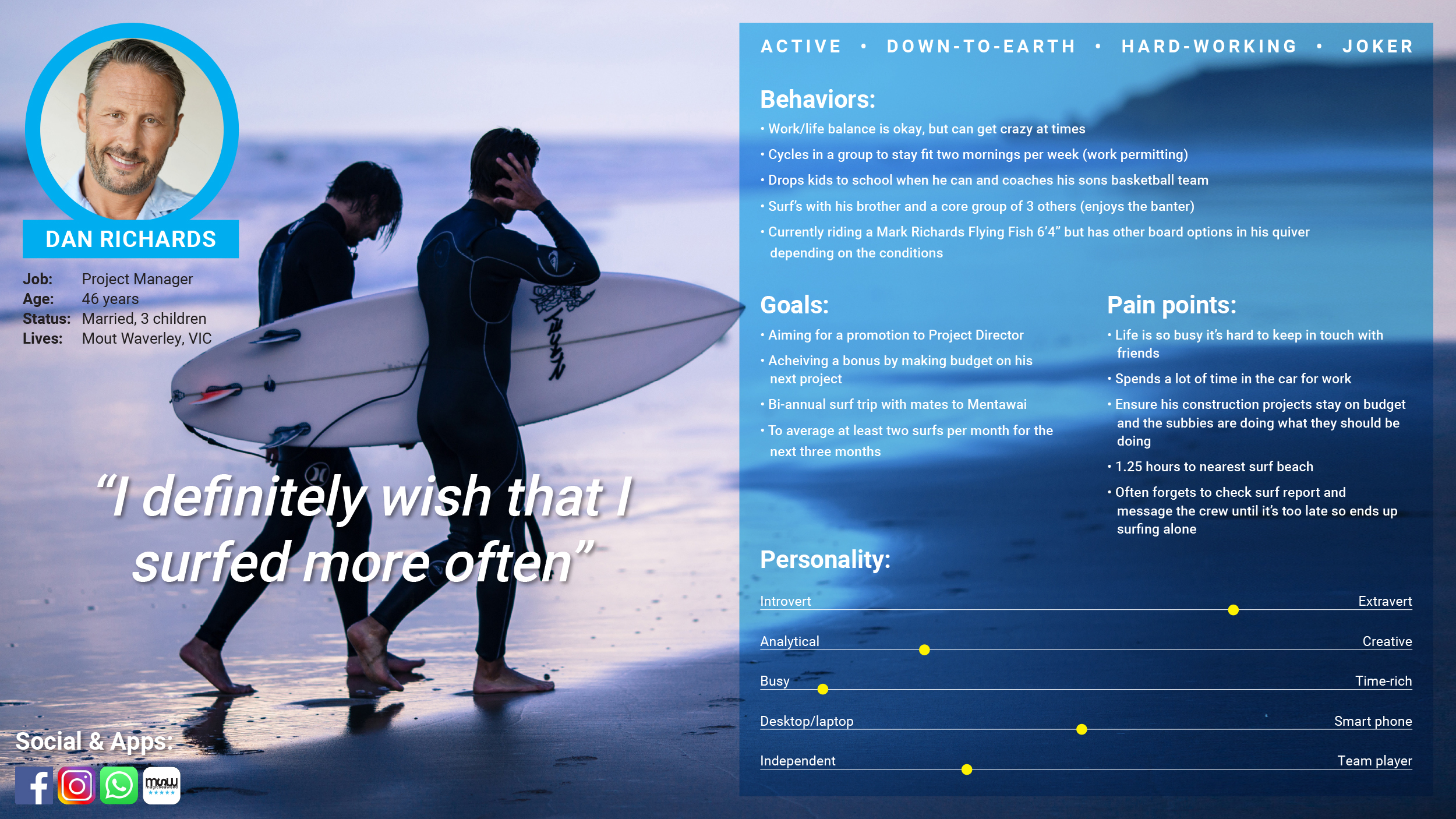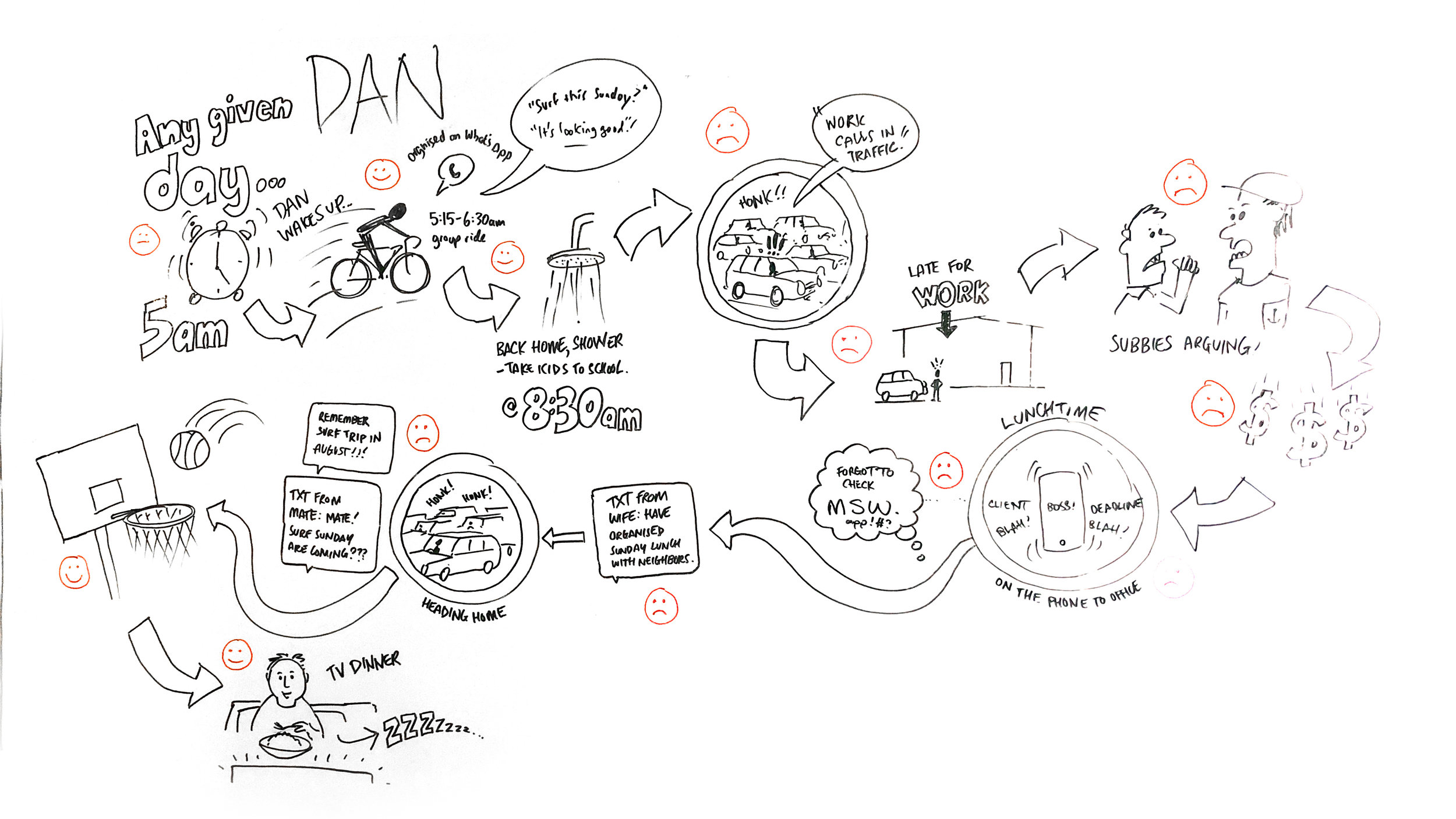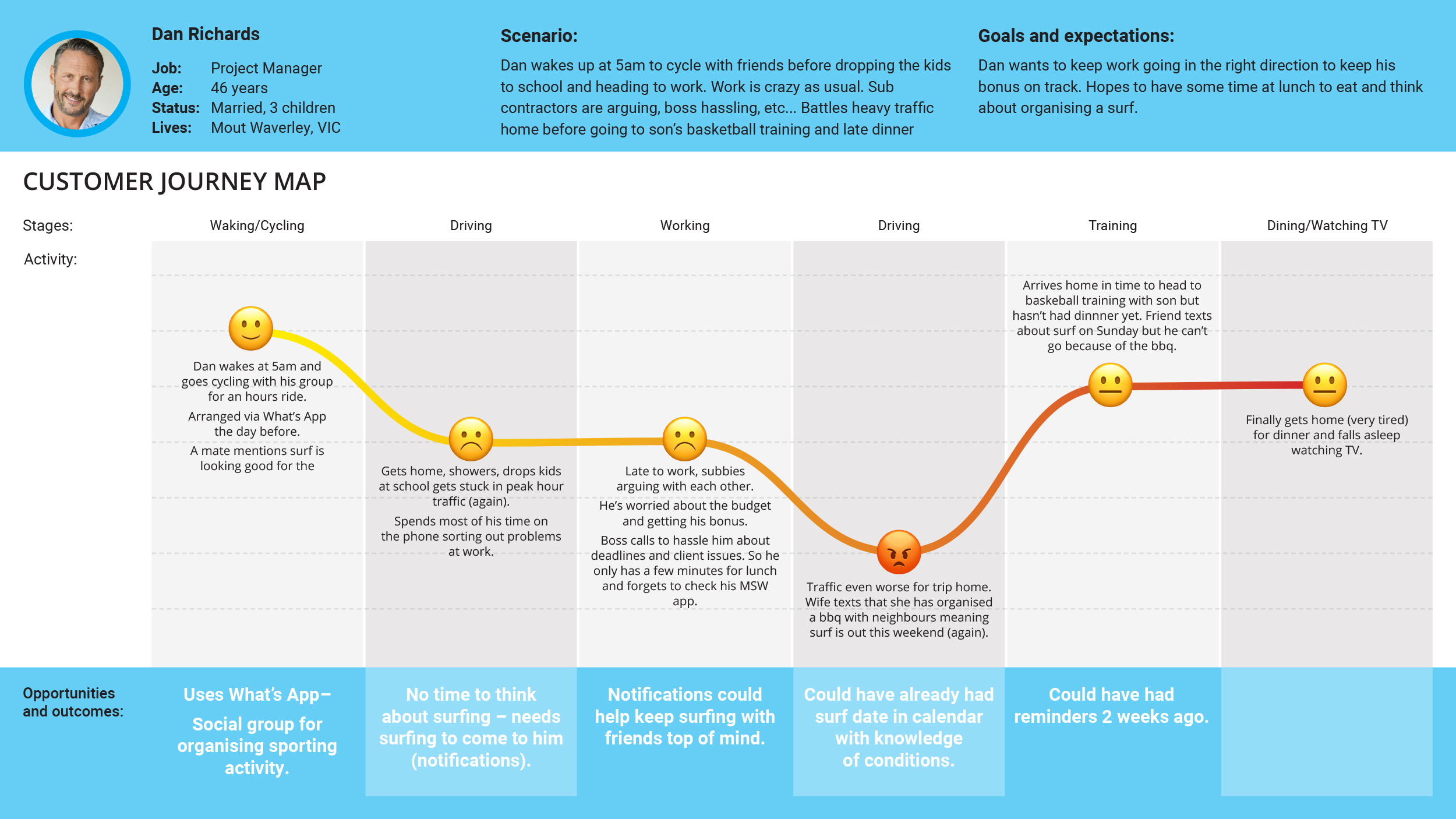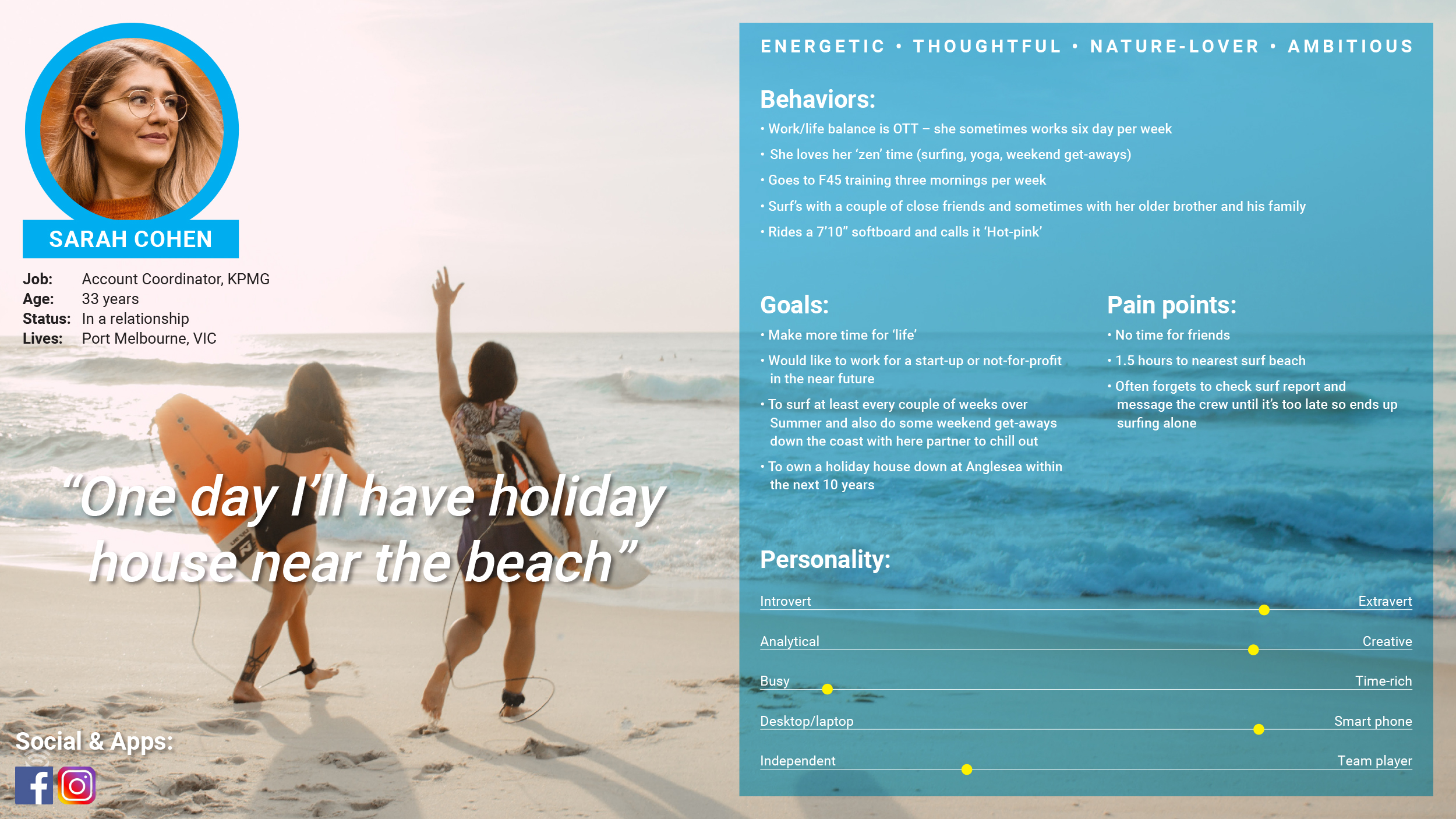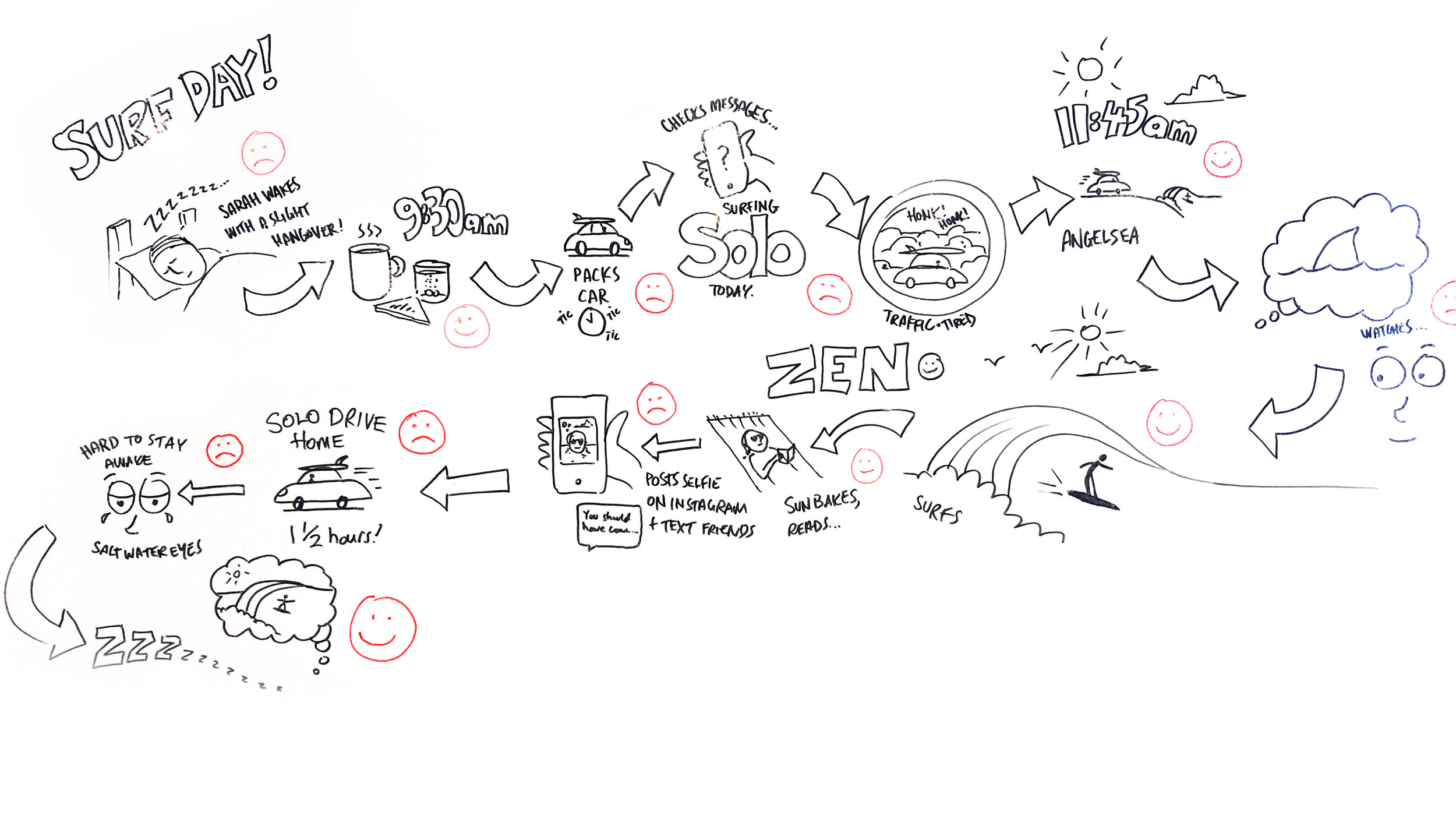SURF BUDDY APP
UX DESIGN
CLIENT: Personal project
DATE: July 2019
I caught the surfing bug as a child when I spent long summer days at the beach with my brother, sisters and friends. It’s been a passion of mine since then. Today, a good surf always leaves me with a sense of nostalgia about those times and a desire to re-live them with my friends and family.
PROBLEM STATEMENT
There are very few surfing opportunities with friends due to peoples busy lives and the difficulty of planning due to surf conditions and other factors, which often means people surf alone or not at all.
INITIAL ASSUMPTION
My initial assumption was that an app that simplifies the surf conditions and forecast data, as well as having social aspect to keep friends in touch about upcoming surfing day-trips could help them have better surfing experiences with their friends more often.
RESEARCH
Survey responses – 175
One-on-one interviews – 7
Competitor analysis
The surfboard (above) is my first ever board which was given to me by my parents at the age of twelve. I used it for the introduction of my final project presentation to explain the nostalgic link I have with surfing and then revealing all of the survey data which I had drawn onto the back of the board. It was an unexpected and engaging way of presenting the data which received a great response from the audience.
KEY OUT-TAKES FROM SURVEY
The two key out-takes were that 84% of people wish they could surf more often and that when 90% of people were unable to find a friend to surf with they were prepared to surf alone.
KEY QUOTES FROM ONE-ON-ONE INTERVIEWS
COMPETITOR ANALYSIS
There are many surfing apps currently available. My survey identified: SwellNet (50%), MSW (45%), Coastal Watch (37%) as clearly the four most popular surfing apps on the market. They are all content heavy and graphically cluttered with only average levels of satisfaction regarding their functionality.
AFFINITY MAPPING
Key insights:
Common themes and pain points were identified by
synthesising the qualitative and quantitative data.
Predominately male activity 89%
The social aspect of surfing is important to people with 72% preferring to surf with friends
Surfing alone is considered more dangerous
Even those who live close to the beach wish they could surf more often
People need help to keep surfing top-of-mind
Current surfing apps are not that great
Many people use apps and social media to get surfing information and organise surfing day-trips
PERSONAS & JOURNEY MAPS
PRIMARY PERSONA
SECONDARY PERSONA
IDEATION SESSION
After fleshing out the personas, empathy maps and identifying pain points, I drew up Dan and Sarah’s journeys to conduct an ideation session.
Dan’s journey was indicative of a typical busy day and how we might help him plan surfing opportunities better, while Sarah’s journey was the problems associated with a typical day- trip for a surf.
REFINING THE PROBLEM STATEMENT
How might we:
Enable people to have more opportunities to share quality surfing experiences with their friends and family, making it more enjoyable and safer than surfing alone.
MVP
The features identified for the Minimum Viable Product (MVP):
Swell, wind, tide
Group (invite friends)
Notifications (forecasts)
Solo surfers (finding like-minded surfers)
IMPLEMENTATION
Agile methodology was employed throughout the implementation of this project. Information architecture, user-flows, wireframes, lo-fi and then hi-fi prototypes were developed using firstly pen and paper, then Pop and Figma with key features designed, developed, tested and refined continuously over the final week of the two-week sprint.
Key features:
Homepage - swell, wind, tide
Group - chat/organise calendar/day-trips
Notifications - forecasts/planning tips/traffic
Solo surfer - finding surfers of equal ability to surf with
As part of user-testing additional features were suggested and included with positive response in progressive iterations.
Additional features:
Surf condition indicator
Beginners beach icon
HI-FI PROTOTYPE
Key features are highlighted in the above video.
NEXT STEPS
The work above is the outcome of one two-week sprint.
Next steps are another two-week sprint to further interrogate the prototype.


